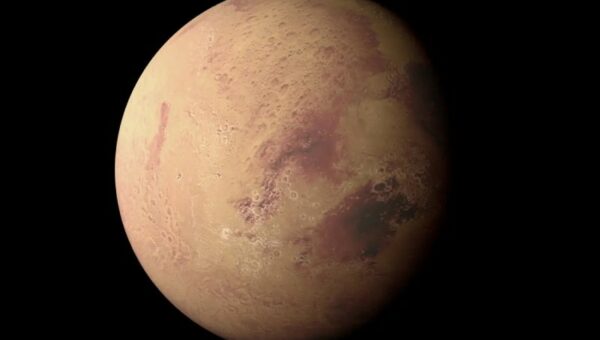A 600-kilometer (373-mile) serpentine scar on the surface of Mars has been seen in new photos released by the European Space Agency with more detail than ever before. There are many blemishes and scars on the Red Planet, and Aganippe Fossa is one of them. It is a ditch-like groove with steep walls; in fact, Aganippe Fossa is a “graben.”
“We’re still unsure of how and when Aganippe Fossa came to be, but it seems likely that it was formed as magma rising underneath the colossal mass of the Tharsis volcanoes caused Mars’s crust to stretch and crack,” the European Space Agency said in a recent press statement.
Much as with other planetary names, “Aganippe Fossa” has its origins in Greek mythology. Aganippe was a Greek nymph connected to a spring at the foot of Mount Helicon. She was the daughter of the river Termessos. Aganippe Fossa is located at the foot of Arsia Mons, one of Mars’ biggest volcanoes, as a tribute to the source of its name. “Fossa” is a long, narrow depression on the surface of a planet or moon. It comes from the Latin word meaning ditch or trench.
Much as with other planetary names, “Aganippe Fossa” has its origins in Greek mythology. Aganippe was a Greek nymph connected to a spring at the foot of Mount Helicon. She was the daughter of the river Termessos. Aganippe Fossa is located at the foot of Arsia Mons, one of Mars’ biggest volcanoes, as a tribute to the source of its name. “Fossa” is a long, narrow depression on the surface of a planet or moon. It comes from the Latin word meaning ditch or trench.
ESA’s Mars Express, Europe’s first mission to the Red Planet, which has been orbiting the planet since 2003, is responsible for the just released photographs. Despite the loss of its lander, Beagle 2, the orbiter is still exploring Mars globally.
From space, a rainbow landscape appears like a swath divided in half by a serpentine, segmented canyon.
The Aganippe Fossa’s terrain
According to an ESA press release, these terrains are typical of the ring-shaped “aureole” of Arsia Mons, which is a 100,000 square kilometer (38,610 square mile) disk that surrounds the volcano’s base and may have been formed by ancient glaciers. “Intriguingly,” according to the release, “this aureole has only built up on the northwestern flank of the volcano, likely due to prevailing winds from the opposite direction controlling where ice settled over time.”
The scientists also describe the windblown dust and sand dynamics of this part of Mars, where darker material is deposited on lighter ground to produce “zebra-like” patterns on the surface. “The surface here also shows evidence of lava flows, dating from when the volcano was active,” the scientists wrote.
Among the many classical albedo characteristics on Mars is Aganippe Fossa, which is defined as the light and dark features visible from Earth even with a telescope. Astronomers now have unrivaled views of the planet’s surface and fascinating topography thanks to space-based orbiters.
“The mission has been immensely productive over its lifetime, creating a far fuller and more accurate understanding of our planetary neighbor than ever before,” scientists from the European Space Agency said.








